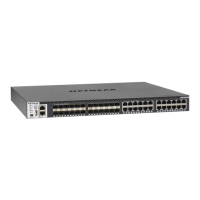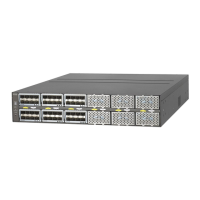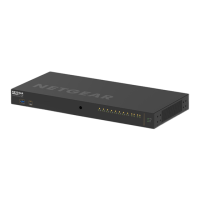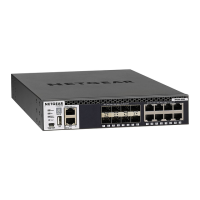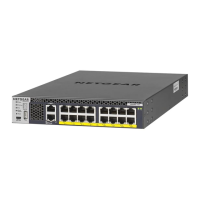Monitoring the System
373
M4100 Series Managed Switch
Port Channel ID If the port is a member of a port channel, the port channel's interface ID and
name are shown. Otherwise Disable is shown.
Port Role Each MST bridge port that is enabled is assigned a port role for each
spanning tree. The port role is one of the following values: Root, Designated,
Alternate, Backup, Master, or Disabled.
STP Mode The Spanning Tree Protocol administrative mode associated with the port or
port channel. The possible values are as follows:
• Enable. Spanning tree is enabled for this port.
• Disable. Spanning tree is disabled for this port.
STP State The port's current Spanning Tree state. This state controls what action a port
takes on receipt of a frame. If the bridge detects a malfunctioning port, it
places that port into the broken state. The five states are defined in IEEE
802.1D:
• Disabled
• Blocking
• Listening
• Learning
• Forwarding
• Broken
Admin Mode The port control administration state. The port must be enabled in order for it
to be allowed into the network. The factory default is enabled.
Flow Control Mode Indicates whether flow control is enabled or disabled for the port. This field is
not valid for LAG interfaces.
LACP Mode Indicates the Link Aggregation Control Protocol administration state. The
mode must be enabled in order for the port to participate in link aggregation.
Physical Mode Indicates the port speed and duplex mode. In autonegotiation mode the
duplex mode and speed are set from the autonegotiation process.
Physical Status Indicates the port speed and duplex mode.
Link Status Indicates whether the link is up or down.
Link Trap Indicates whether or not the port sends a trap when link status changes.
Packets RX and TX 64 Octets The total number of packets (including bad packets) received or transmitted
that were 64 octets in length (excluding framing bits but including FCS
octets).
Packets RX and TX 65-127
Octets
The total number of packets (including bad packets) received or transmitted
that were between 65 and 127 octets in length inclusive (excluding framing
bits but including FCS octets).
Packets RX and TX 128-255
Octets
The total number of packets (including bad packets) received or transmitted
that were between 128 and 255 octets in length inclusive (excluding framing
bits but including FCS octets).
Table 100. Port Detailed Statistics screen fields (continued)
Field Description
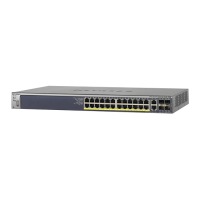
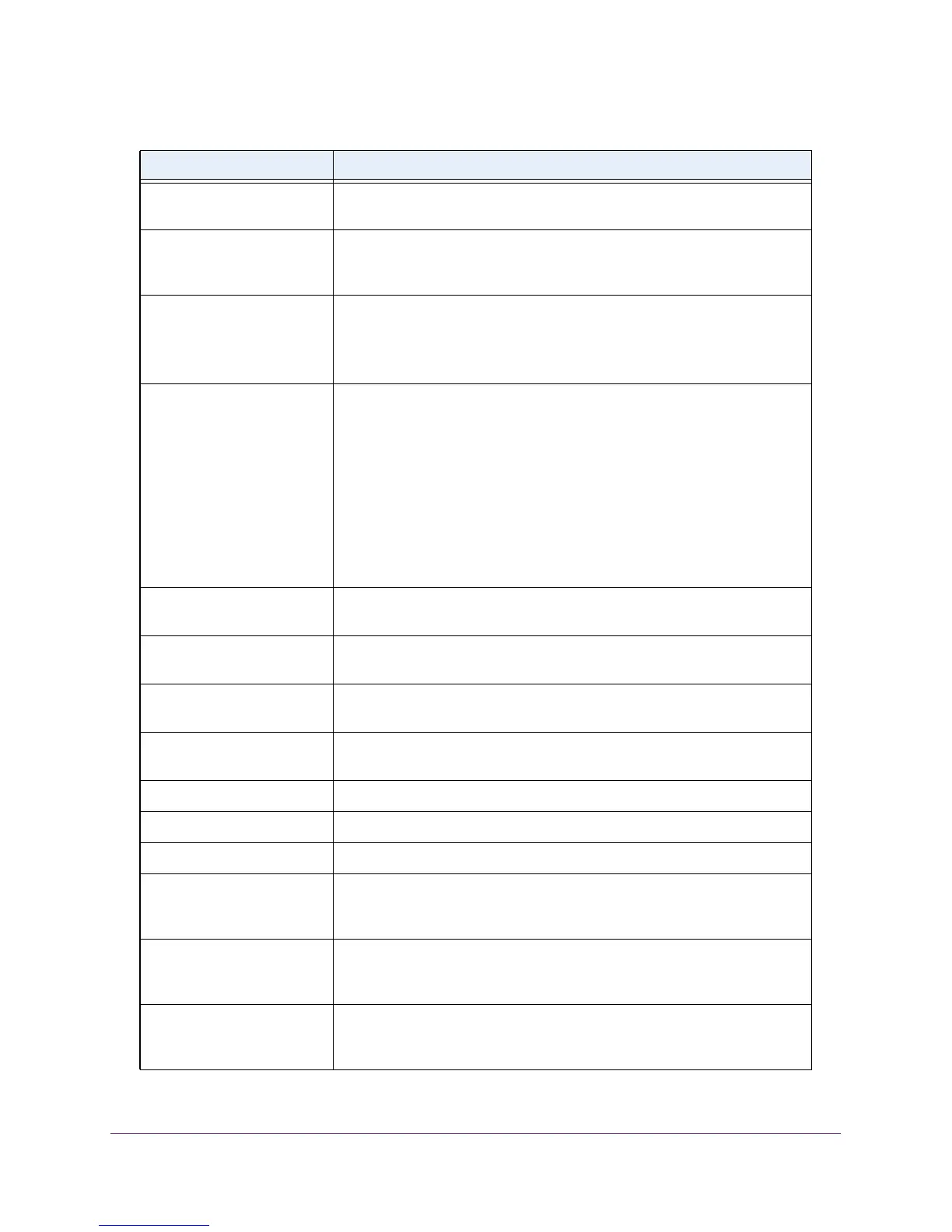